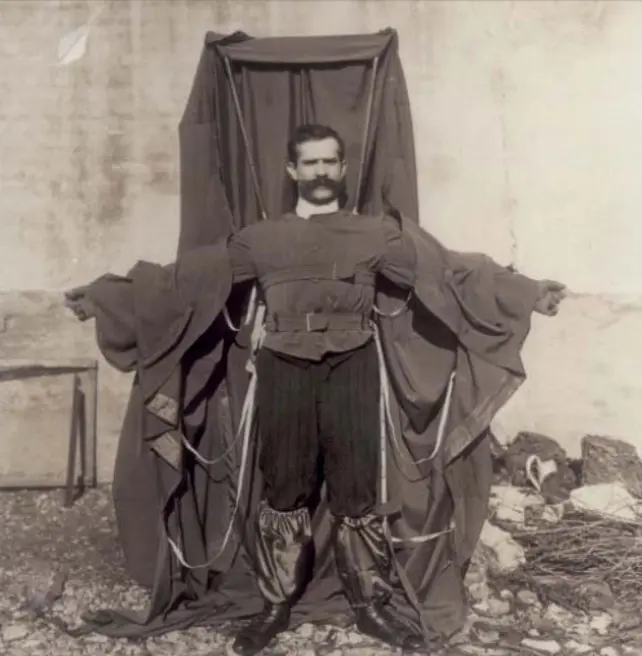6 terrible inventions that killed their inventors
To be an inventor, you need a pile of junk, some imagination, and the ability to take a bold step. Some inventions change the course of human history – and some are shockingly counterproductive – making their creators just Wikipedia pages and Darwin Prizes of our time. Here are 10 stories of inventors who should have stayed in bed the day they tried to make their mark.
1. In 208 BC, Li Si was tortured to death using the device he had invented
As China's first prime minister, Li Si developed the Five Pains method of torture and execution. Li Si was sentenced to death after being convicted of treason by the emperor and five pieces of his autopsy were cut off before bleeding to death without ceremony.
Recommend
2. In 1703 the new Henry Winstanley lighthouse collapsed around him

The English architect Winstanley had great confidence in the power of the newly built Ediston Lighthouse. During the Great Storm of 1703, he and five others died when they refused to leave the lighthouse, guide ships from among the rocks, and the tower collapsed.
3. In 1863 Horace Hanley sank his new submarine

Submarine technology was limited during the Civil War era, but that didn't stop Hanley, a Confederate naval engineer, from inventing and piloting the first hand-powered combat submarine. The submarine had already sunk once before when Hanley joined a routine training exercise, in which the ship and its eight crew members failed to return to the surface. The boat was named after him after his death when it was recovered.
4. In 1867, William Bullock dropped a new printing press on his foot
The invention of the circulation printing press in 1863 accelerated and revitalized the printing industry, but the same cannot be said of its inventor, William Bullock. Four years after the original invention, Bullock crushed his foot while installing and testing a new machine in Philadelphia. The foot contracted gangrene and failed to survive an amputation attempt.
5. In 1903 William Nelson died on the first motorcycle

Nelson, a 24-year-old employee of General Electric from Schenectady, New York, attempted to create a new prototype of a motorcycle in 1903. On his first test trip, he fell off the bike while climbing a hill and died instantly.
6. In 1912 Franz Reichlt jumped from the Eiffel Tower wearing a parachute suit
Franz Reichlt was a tailor by profession, but in the early days of robotic human flight, he was inspired to design a suit that pilots could use as a parachute. After initial tests using dolls, he was so sure that his design would succeed that in 1912 he decided to test it by jumping from the lower level of the Eiffel Tower in Paris, France. Unfortunately for Franz, his design failed and he fell to his death within seconds. However, thanks to pioneering spirits like this, we now have wing suits used for basic jumping, as well as parachutes and ejection seats for pilots.
7. In 1944 Thomas Midgley Jr. accidentally strangled himself in bed
As if polio and disability at age 51 weren't bad enough, Thomas Midgley suffered an unfortunate end at the hands of the device that was supposed to help him. He invented a series of rollers and threads designed to help others lift him from his bed. In 1944, an American chemist and engineer accidentally entangled in the threads and was strangled.
8. In 1973 the wing of Henry Smolinski's Ford Bento plane broke up in mid-air

The Mizar, designed to connect the highway to the sky, was unveiled in 1973 by Smolinsky's Advanced Vehicle Engineers Company. The plane had a Ford Bento chassis with the wings of a Cessna aircraft, using the car's engine and propeller to take off. Poor design and construction were blamed for the events of September 11, 1973, when the right wing of the car separated from the body. Smolenski and pilot Harold Blake were killed in the crash.
9. In 1985 Karl Susek died in a barrel he invented to survive the waterfall stunt
Susik, a Canadian stunt actor, took his "capsule," a fortified barrel, from the top of the Houston Astrodome dome. A 180-foot-tall waterfall was designed, but the capsule swerved badly, hitting the edge of the pool. Susek was seriously injured and died the next day.
10. In 2009, the stunning new air taxi created by Michael Dacre crashed
In an effort to revolutionize short-haul air travel, making it easy to fly near city centers, inventor and pilot Michael Dacre created a flying taxi called Jetpod. During a 2009 test run in Malaysia, the plane traveled a few hundred meters before deflecting insanely and hitting the ground. 53-year-old Dacre died on impact.
Addendum: In 2010, Jimmy Hesselden, owner of Segway, fell on his Segway bike to death
Although he is not the inventor of Segway, Heissden, the company's owner, rode the Segway rugged-terrain bike on a trip one September morning. After reversing to allow a dog's escort to pass through a narrow corridor, Heiselden fell off an 80-foot-high cliff. The British billionaire and philanthropist was found dead in the river below.
![]()
If we look at Olympic stadiums since 1896, are they still in use?
Looking back at the Olympic venues since 1896 – are they still in use more- ADVERTISEMENT
![]()
How periods of consistency guided me to the goal: your actions are your compass
How Periods of Consistency Guided Me To Purpose- Your actions are your compass more- ADVERTISEMENT
![]()
Debate about colors: does matter or brain determine?
Color isn’t just a property of objects—it’s a mix of light, brain interpretation, and even emotion. The dress debate proved we don’t all see the same thing, and for some animals, "red" doesn’t even exist. Turns out, what we see may be more illusion than reality. more- ADVERTISEMENT
![]()
The Dream of Getting Rich Quick: Stories of Turning Good Fortunes into Millionaires Overnight
Overnight Millionaires: People Who Got Rich Quick more- ADVERTISEMENT
![]()
History of the Panama Canal: everything you need to know
The Panama Canal, a century-old dream turned into a reality in 1914, transformed global trade by linking the Atlantic and Pacific Oceans. Overcoming disease and engineering obstacles, it remains vital today, especially after its 2016 expansion allowing larger ships to pass and boosting its role in world commerce. more- ADVERTISEMENT
![]()
Proven ways to build your confidence
Self-confidence isn't about being perfect—it's about knowing your strengths, embracing your flaws, and growing through experience. Celebrate small wins, speak kindly to yourself, and keep learning. With each step forward, you’ll prove to yourself that you are capable and ready for life’s challenges. more- ADVERTISEMENT
![]()
The Sahara Dilemma: Are Deserts Vital to the Balance of Our Planet?
Deserts may seem lifeless, but they are vital ecosystems rich in biodiversity and cultural heritage. From storing carbon to nourishing distant rainforests, they play a key role in Earth's balance. Despite harsh conditions, both nature and humans have adapted, proving deserts are far more than dry, empty land. more- ADVERTISEMENT
![]()
Success Guide - How did you develop the habit of reading?
Reading is a fun and rewarding habit that boosts knowledge and self-growth. Start with books you love, set small, realistic goals, and make reading part of your daily routine. Share the joy with others, use reading apps, and don't give up—consistency makes it easier and more enjoyable over time. more- ADVERTISEMENT
![]()
Motivation: How to Start and Stay Motivated
Motivation: How to get started and staying motivated more- ADVERTISEMENT
![]()
Success Guide – How to turn your presentation into an exciting story?
Success Guide – How to turn your presentation into an exciting story? more- ADVERTISEMENT





















